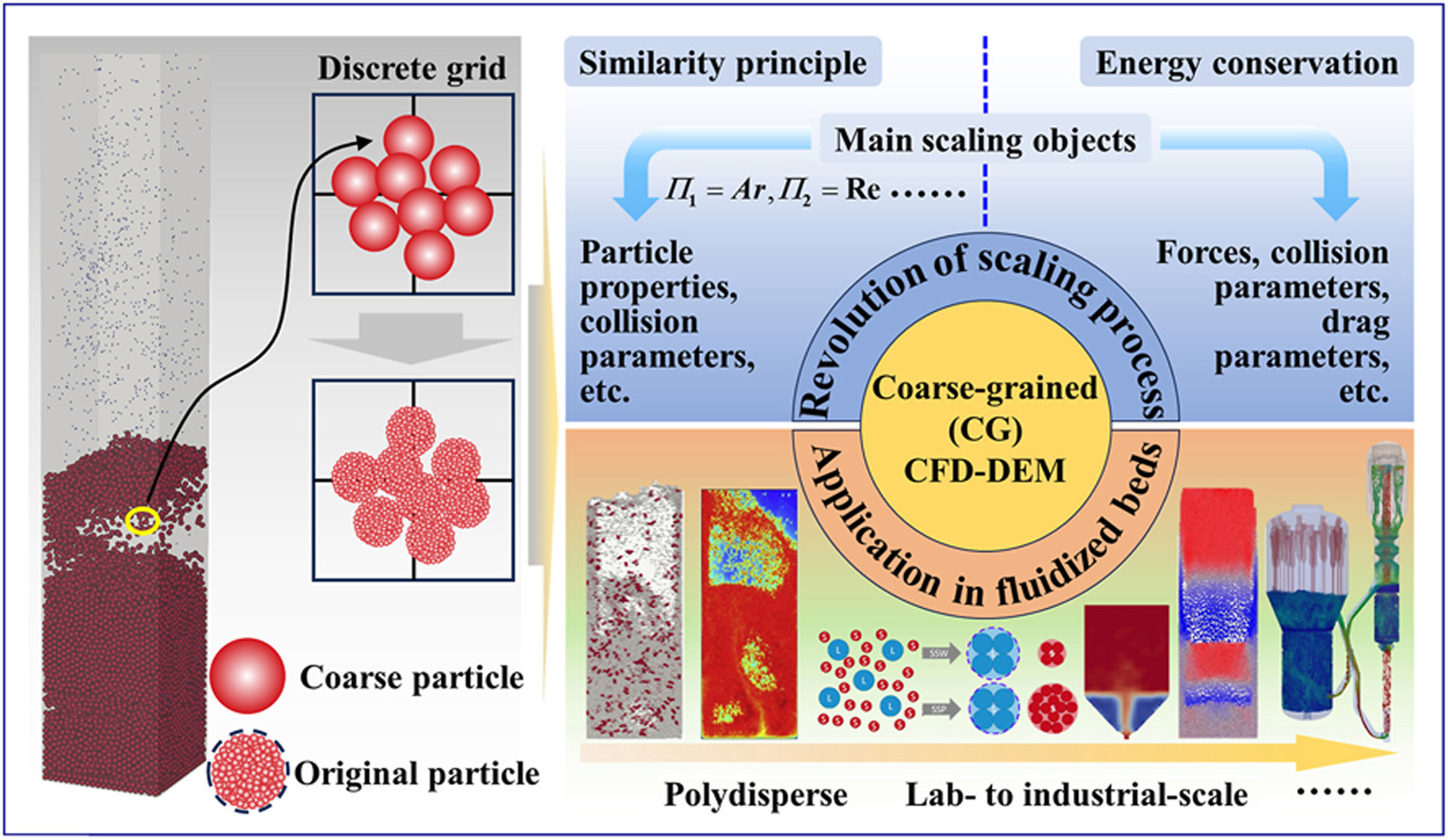•Revolution of coarse-grained (CG) CFD-DEM based on two principles was reviewed.
•Application of CG CFD-DEM in fluidized beds was comprehensively summarized.
•Some potential drawbacks and critical challenges in CG CFD-DEM were emphasized.
•The CG CFD-DEM simulation for industrial-scale systems is increasingly prominent.
Due to their superior mixing and heat transfer capabilities, fluidized beds are extensively utilized in chemical engineering, power generation, etc. Numerical simulations have long been essential for elucidating the nonlinear multiphase transfer processes within reactors. However, as the research perspective expands from lab-to pilot- and industrial-scale, the exponential increase in particle numbers constrains the applicability of multiphase flow models such as discrete element method (DEM), direct numerical simulation, etc. As an extension of traditional DEM methods, the coarse-grained (CG) DEM strategy effectively balances computational efficiency and accuracy. In order to promote the advancement of CG DEM in the field of fluidized beds, its development and applications are comprehensively reviewed in this work. First, the foundational principles of the CG method—similarity and energy conservation—are outlined. The scaling paradigms of the collision parameters, force formulations, and gas-solid properties are systematically listed in chronological order. Subsequently, the applications of the CG method across lab-, pilot-, and industrial-scale fluidized beds under both cold and heated conditions are summarized. Finally, future challenges and opportunities are highlighted. This review aims to accelerate the adoption of CG techniques in industrial-scale reactors while providing theoretical insights for optimizing existing models and developing novel scaling laws.

